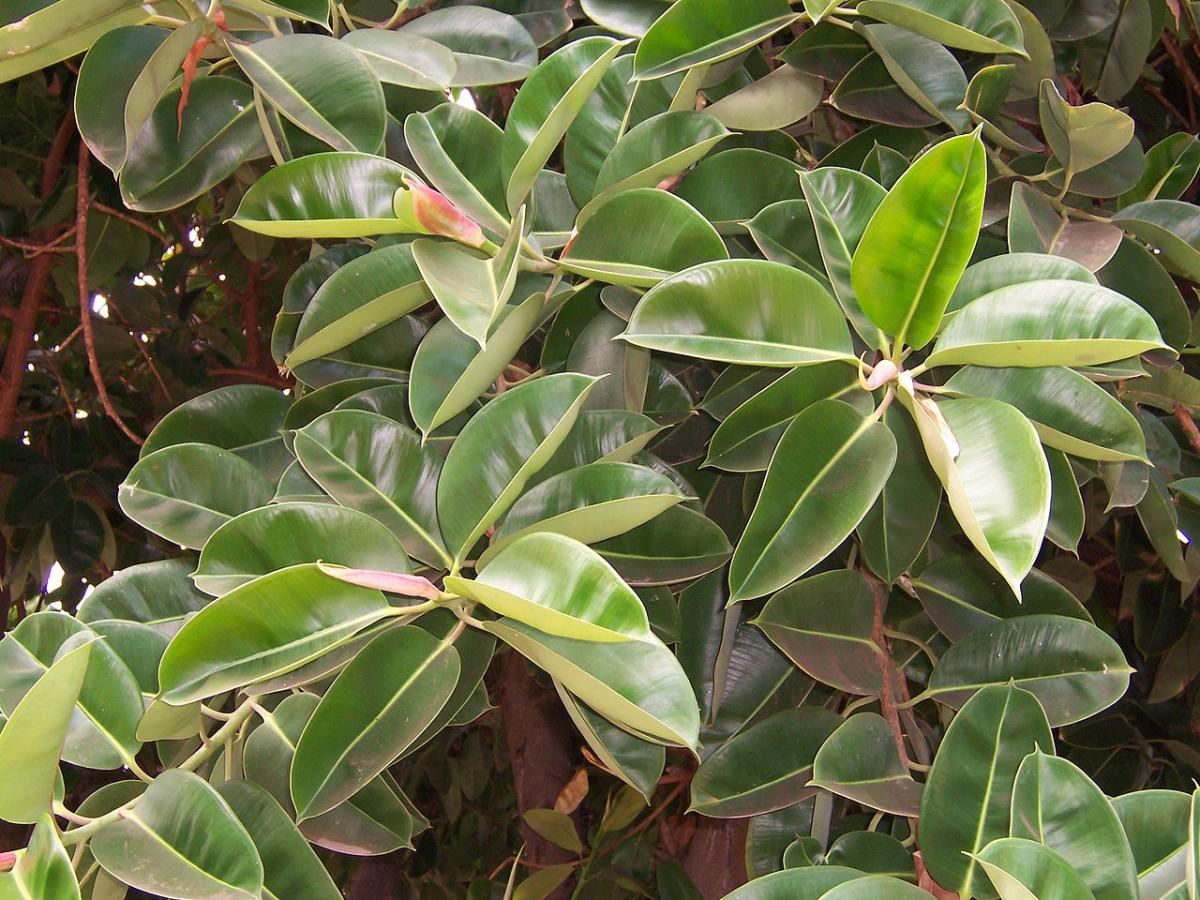
Image - Wikimedia / B.navez
Ficus are a genus of plants that includes large plants. Some of the species can exceed 30 meters in height and/or 2 meters in width. For this reason, they are often seen more in large gardens, and not so much in small ones. But even so, you have to know that they recover quite well from pruning, so much so that there are not a few varieties that are used as bonsai.
But, what are the different types of Ficus that are most cultivated? How are they cared for? I will talk about this and more below.
What is ficus?
Ficus is the name of the genus to which some 800 species of trees, shrubs and climbers belong. It belongs to the Moraceae family and the Ficeae tribe. The plants are mainly found in the tropical and subtropical regions of the world., but there are some, like the F. carica, that prefer a temperate climate, in which the four seasons are different. The latter are deciduous, as the winters can be too cold to support them; instead, the former are evergreen.
Its main characteristic is the latex that it contains inside.. It is a milky, whitish substance that oozes from the wound caused by pruning, wind, or animals. If it comes into contact with the skin, it causes irritation and itching, but these symptoms are usually calmed simply by washing it with soap and water (if not, you should see a doctor).
What we call fruit is also a detail that makes them unique. Actually it is an inflorescence whose flowers are inside it. These are normally pollinated by a special type of wasp, from the Agaonidae family. I say 'normally' because there are varieties or cultivars that do not require any pollination.
If required, the female wasps penetrate the fig and lay their eggs in the ovaries of the flowers. When they hatch, the wingless males reproduce with the females who are still, so to speak, asleep, and then die inside the fig. When the females wake up, as they have wings, they can go out without problems in search of a fig where they can lay their eggs.
Classes or types of Ficus
Of the more than 800 types of Ficus that exist in the world, only a few are frequently grown in gardens (yes, important: since this is a tree blog, we only talk about tree species -including those that start their life as epiphytes- and shrubs, not climbers like the Ficus repens):
ficus benghalensis

Image - Wikimedia / Bernard DUPONT
The banyan or strangler fig tree is an evergreen plant that begins its life as an epiphyte, and at the end, when its aerial roots touch the ground, they take root and lignify (become woody), forming something similar to a trunk. It owes its name to its lifestyle: if the seed germinates, for example, on the branch of a tree, it germinates, grows and its roots strangle it. In the end, the tree that supported it dies and rots.
It is endemic to Sri Lanka, India and Bangladesh. It can measure up to 20 meters in height, and occupy several hectares. It is grown in tropical and subtropical climates, since it does not support frost.
Ficus benjamina
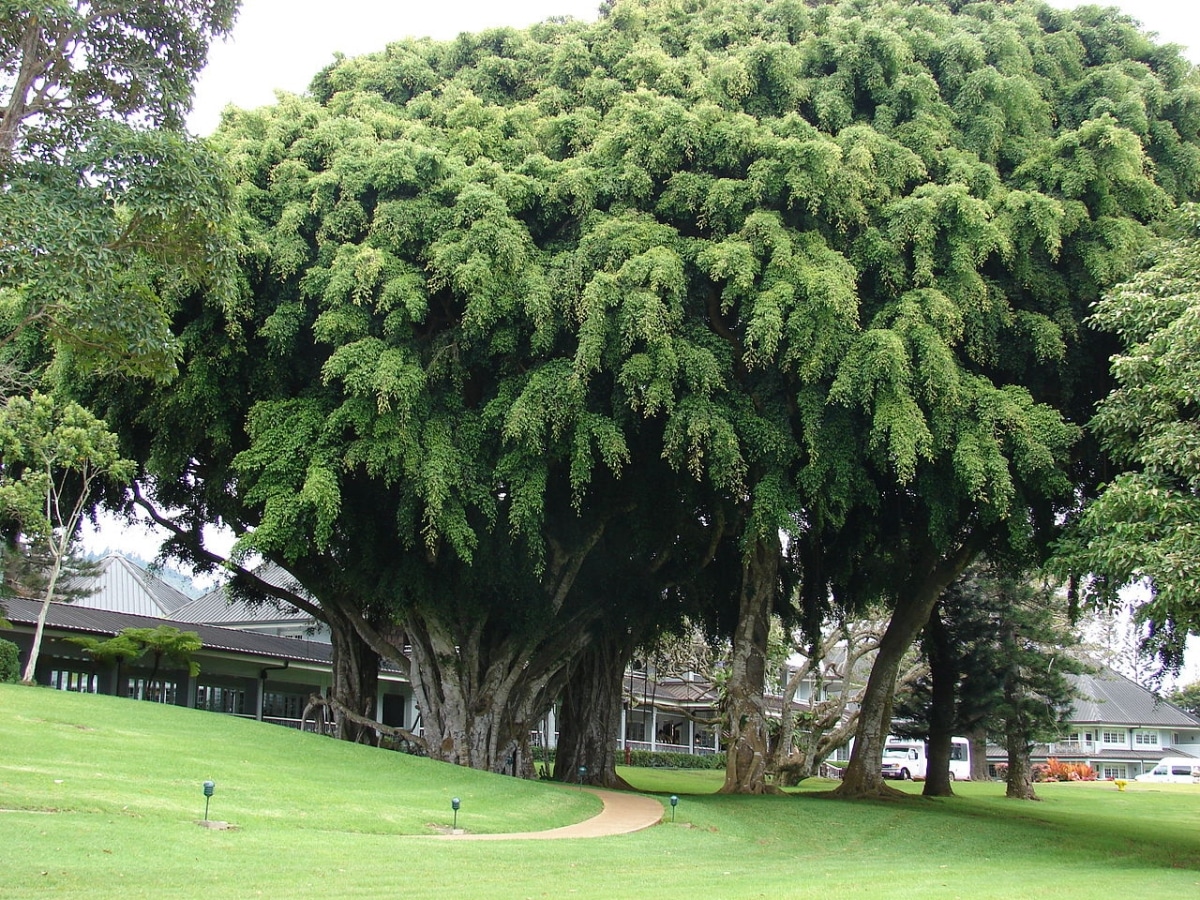
Image - Wikimedia / Forest & Kim Starr
El Ficus benjamina It is an evergreen tree native to Asia and tropical and subtropical Australia. Although it is one of the smaller types of ficus, it is a plant that reaches 15 meters in height. It has green or variegated leaves, oval in shape and ending in a point. Its figs serve as food for birds.
Taking into account their places of origin, it must be borne in mind that cannot be grown outdoors in frosty areas. In my area (south of Mallorca), it is usually kept in pots on covered patios, but the lowest temperature is -1,5ºC, it is only recorded once or twice a year (and not always), but even so It is normal to lose some leaves. Therefore, if it is colder in your area, it is better to have it in a greenhouse, or in a room where a lot of light enters.
ficus carica
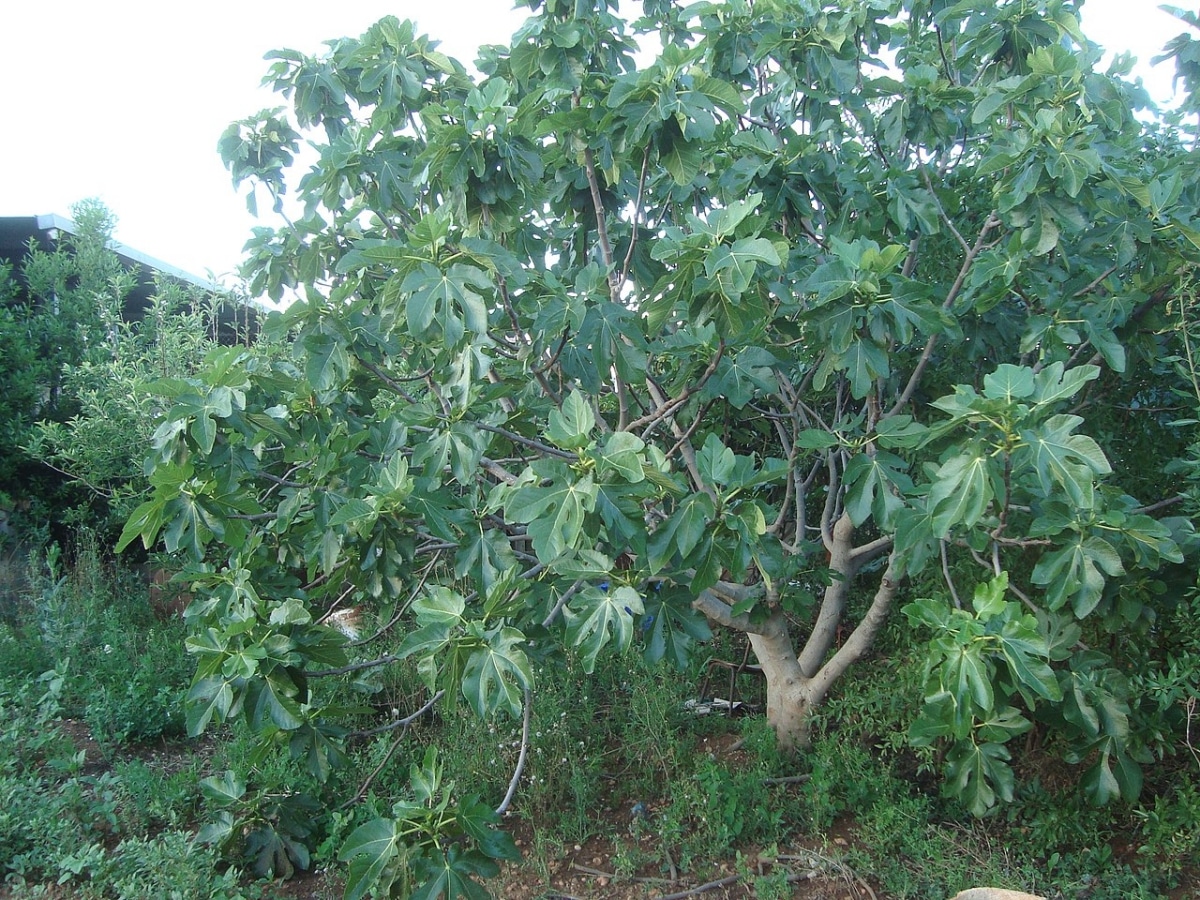
Image - Wikimedia / Juan Emilio Prades Bel
El ficus carica, or fig tree, It is a deciduous tree that reaches a maximum height of 8 meters. The leaves are lobed, green, and measure about 25 centimeters long by 18 centimeters wide. It is the species that produces sweet-tasting figs, suitable for human consumption.
Its origin is in Southwest Asia, but it has become naturalized in the Mediterranean region, where it has been cultivated for centuries. It resists frosts down to -10ºC.
Ficus cyathistipula
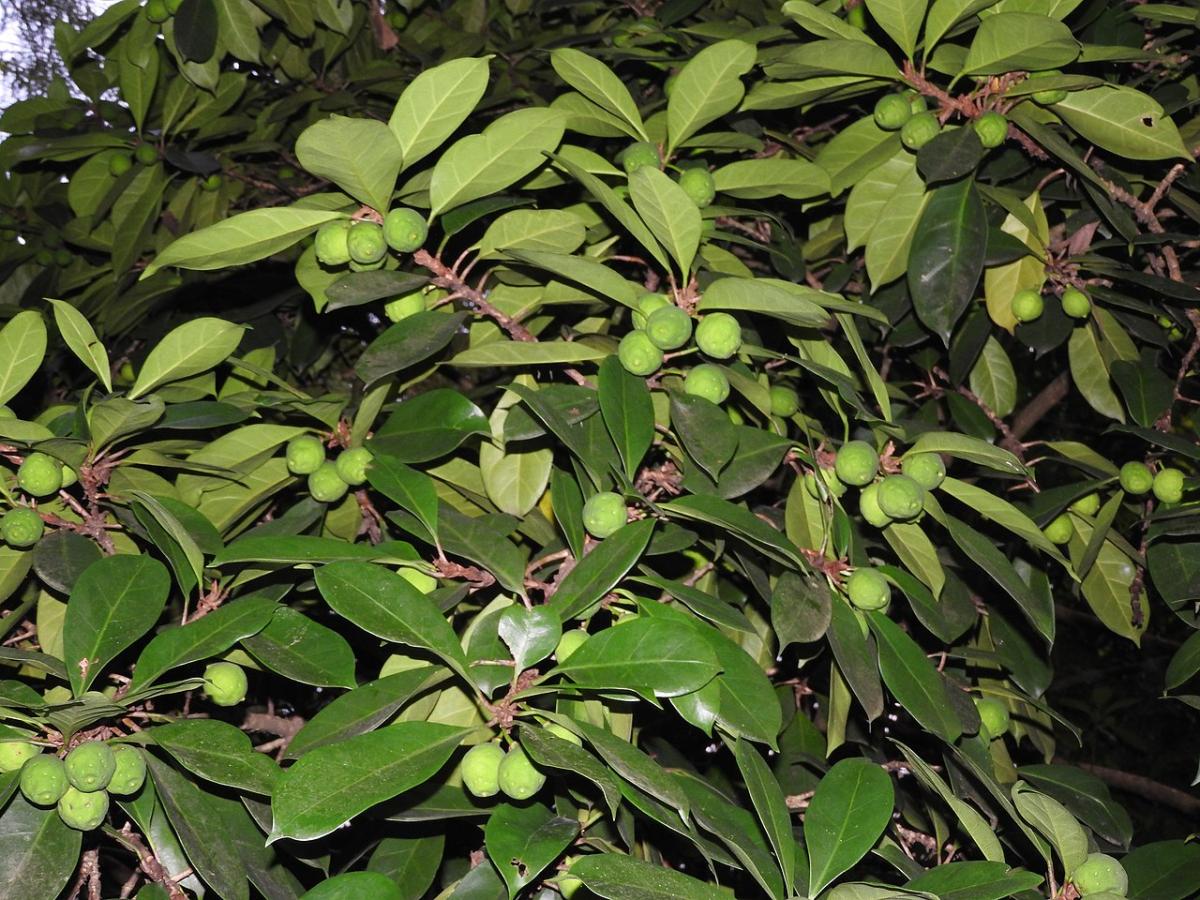
Image - Wikimedia / Yercaud-elango
It is an evergreen shrub known as the African fig tree. Reaches 4 meters in height, and has glossy dark green obovate leaves. Figs are globular, pale yellow or greenish in color.
It is native to tropical Africa, so it is very sensitive to frost. Considering its size, it can be a wonderful terrace or patio plant.
Ficus elastica (before robust ficus)
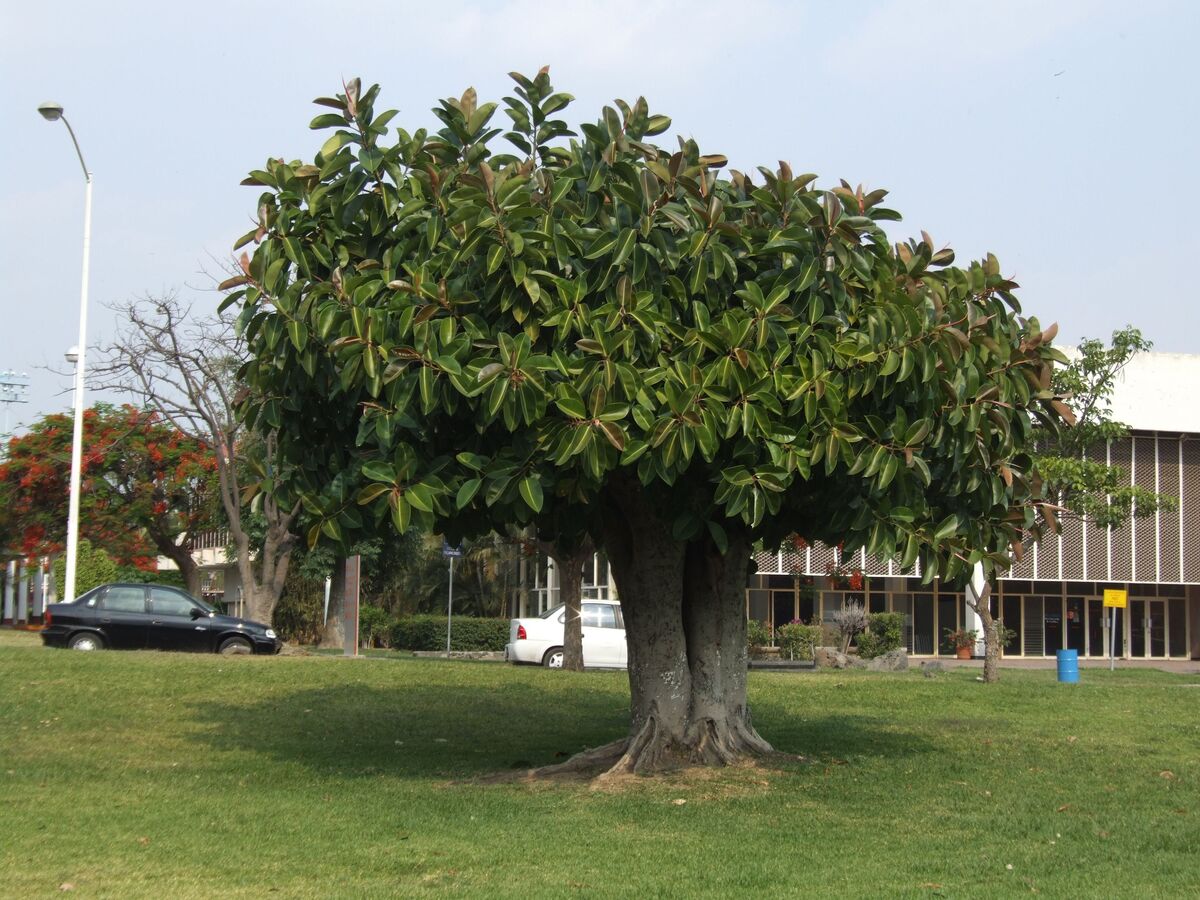
El Ficus elastica It is a tree that has large leaves, with a shiny dark green upper side and a matte lower side. develop aerial roots, and its fruit is actually a green inflorescence that measures 1 centimeter. It is a ficus native to Assam (India), and western Indonesia.
It can reach 30 meters in height and develop a trunk of up to 2 meters in diameter.. It is widely used as an indoor plant in temperate climates, since luckily or unfortunately it does not resist frost.
ficus lyrata (before ficus pandurata)
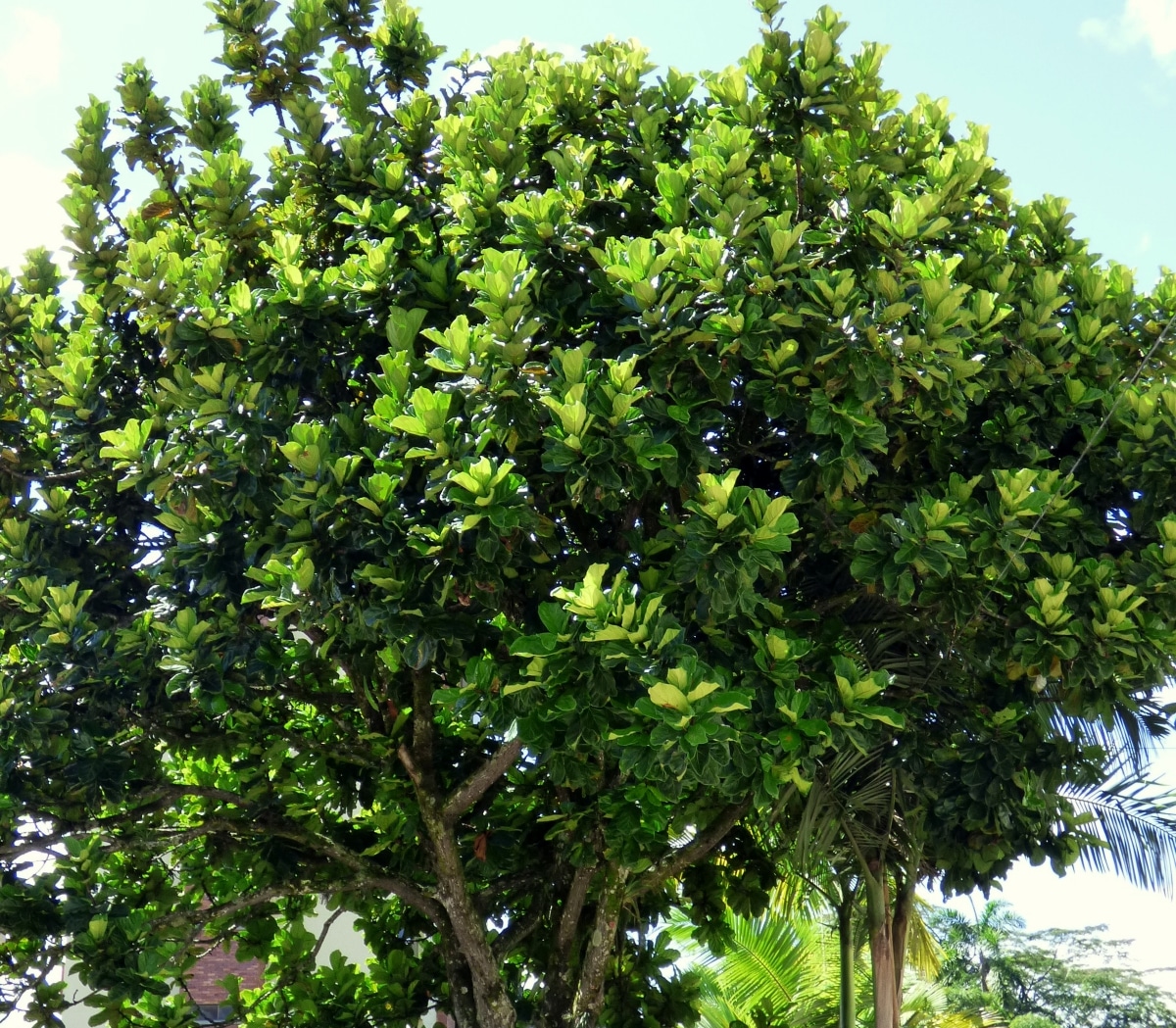
Image - Wikimedia / Alejandro Bayer Tamayo
El ficus lyrata It is an evergreen tree native to West Africa that is known as the fiddle leaf fig tree. It can measure between 12 and 15 meters in height, and has green leaves with a variable shape in which the apex, which is wide, and a light green central nerve stand out.
It is a type of ficus widely used to decorate gardens without frost, as well as the interior of homes, offices, etc. The lowest temperature it supports is 10ºC.
Ficus macrophylla
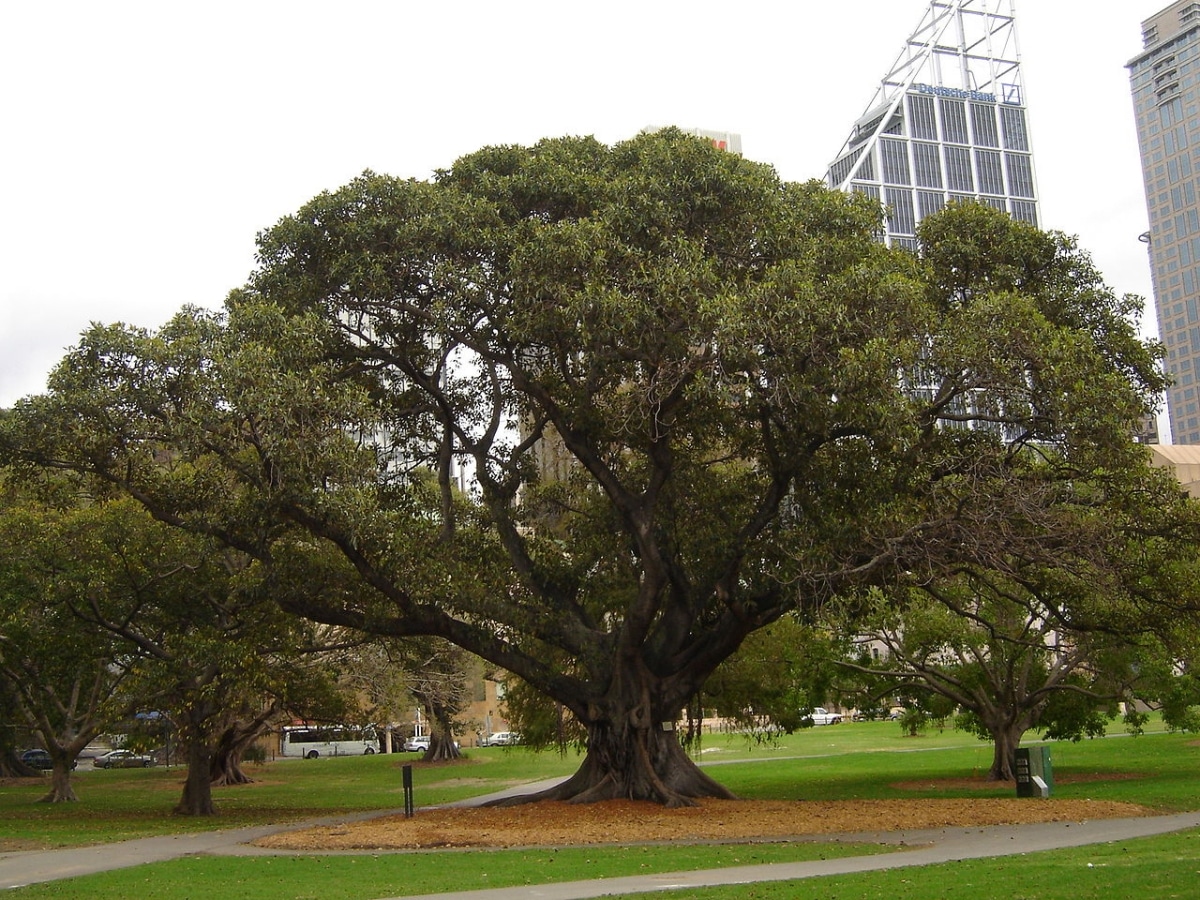
Image - Wikimedia / DO'Neil
El Ficus macrophylla It is a large evergreen tree known as the Australian fig tree or Moreton Bay fig tree. It is native to eastern Australia, and grows up to 20 meters high. It tends to produce many aerial roots that support the crown. The latter is formed by elliptic leaves, about 30 centimeters long, and dark green. The figs measure 2 centimeters in diameter and are purple when ripe.
It is a type of fig tree that can be grown in warm climates, including in the Mediterranean region. Withstands mild frosts, down to -4ºC, punctual and of short duration. When it is young it needs protection against the cold.
Ficus maclellandii
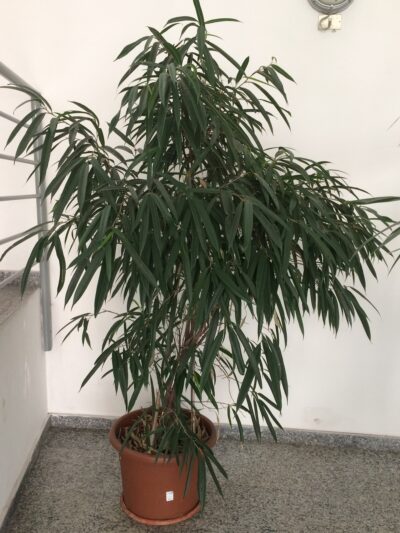
Image - Wikimedia / Luca Bove
El Ficus maclellandii It is an evergreen tree known as the banana leaf fig tree or Alii fig tree native to India and China. It can measure about 20 meters in height, but since it is very sensitive to cold, it is usually kept as an indoor plant in temperate climates, where it is very difficult for it to exceed 3 meters. It has lanceolate, thin, dark green leaves, unlike other ficuses that have wider ones.
'Alii' is the most common cultivar. From my own experience, I can tell you that it adapts very well to living indoors with lots of (natural) light. I put mine in front of a large east facing window, and it grows quite well. But yes, it is not a good idea to have it outside during the winter if the temperature drops below 10ºCbecause it would die.
Ficus microcarp (before Ficus nitida, Ficus retusa)
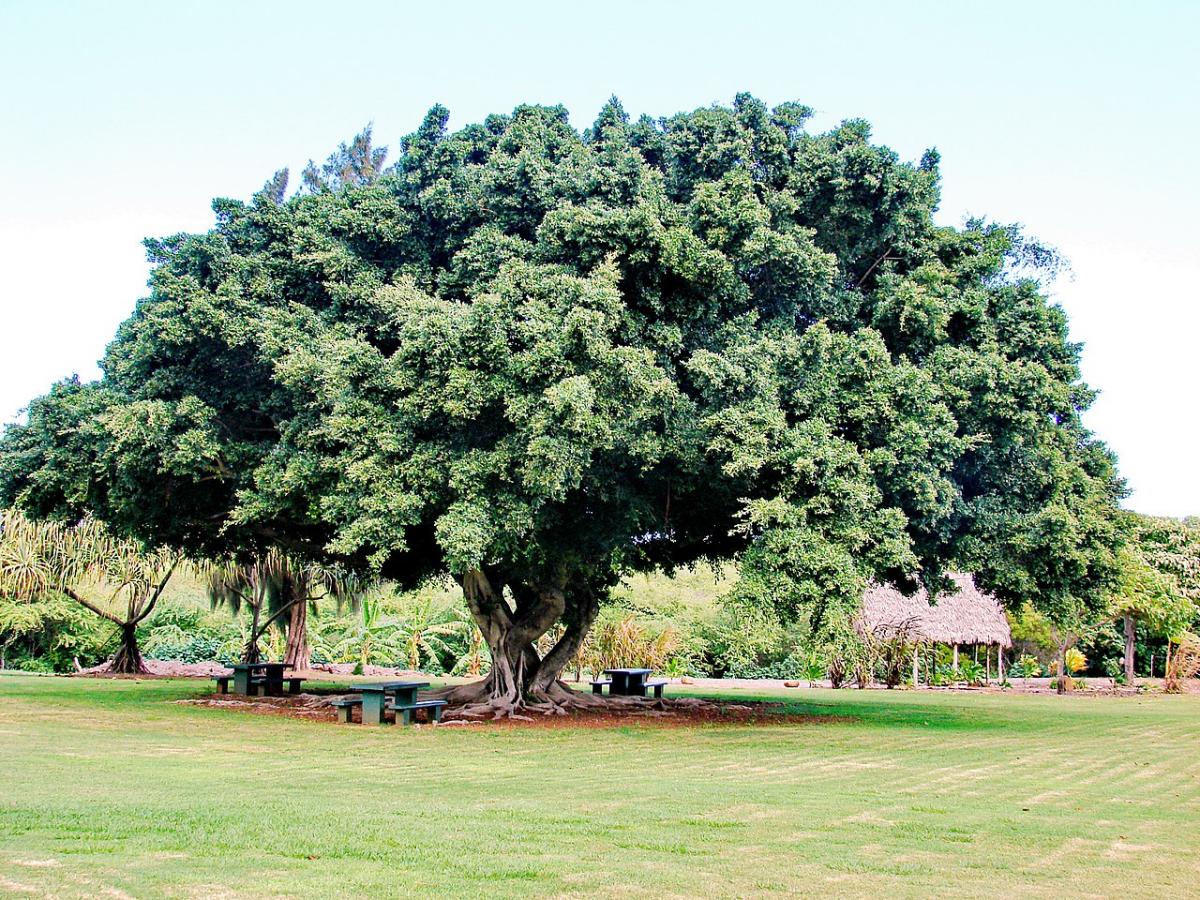
Image - Wikimedia / Forest & Kim Starr
El Ficus microcarp It is a tree called as Indian laurel or laurel of the Indies that grows naturally in tropical Asia. It can measure more than 30 meters in height, and have a crown of more than 70 meters (in the Menehune Botanical Garden, in Hawaii, there is one that measures 33 meters high, with a crown of 53 meters wide). The leaves are small, about 76 centimeters long by 6-2 centimeters wide, and green.
It is widely used as a bonsai, but when the climate is tropical or subtropical and the garden is large, it is possible to grow it as an isolated specimen. It can withstand mild, punctual and short-term frosts of up to -1ºC, but it is better not to drop below 0 degrees.
Religious ficus

Image - Wikimedia / Vinayaraj
El Religious ficus It is a tree native to Nepal, southwest China, Vietnam and Indochina that can be evergreen or semi-deciduous depending on the climate (if there is a dry or cold season, it will lose part of its leaves; if instead the temperatures remain without much change throughout the year and it rains regularly, chances are it won't drop them all at once). It grows up to 30 meters high, and does not support frost.
ficus rubiginosa (before ficus australis)
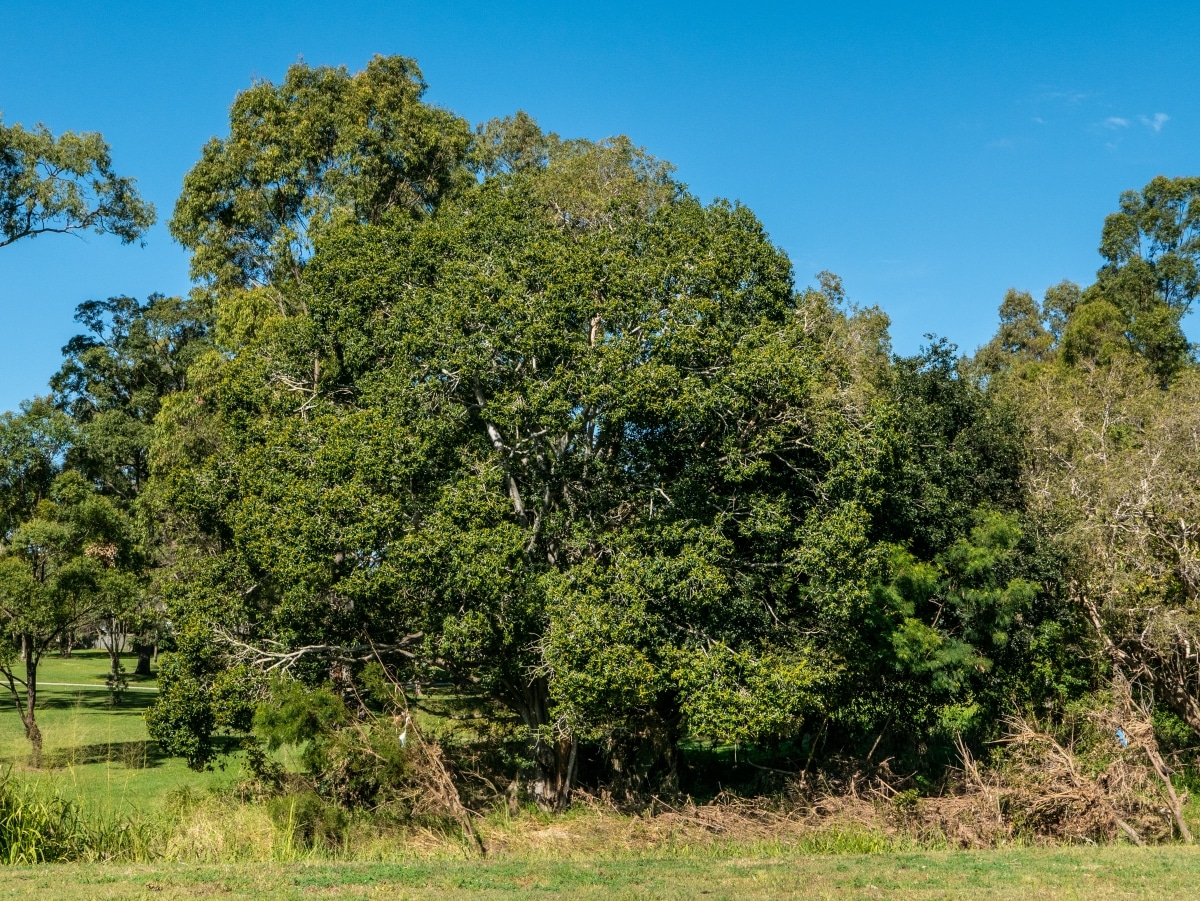
Image - Wikimedia / John Robert McPherson
El ficus rubiginosa It is an evergreen tree known as banyan or Port Jackson fig native to eastern Australia. It can measure 30 meters in height, although it is usual that it does not exceed 10 meters. Its leaves are ovate to elliptical, measure 10 centimeters long by 4 centimeters wide, and are green.
It is a plant sensitive to frost, which will thrive better in tropical climates than in warm temperate ones such as the Mediterranean, in the south of Spain, specifically in Cadiz, there are several large specimens.
ficus umbellata
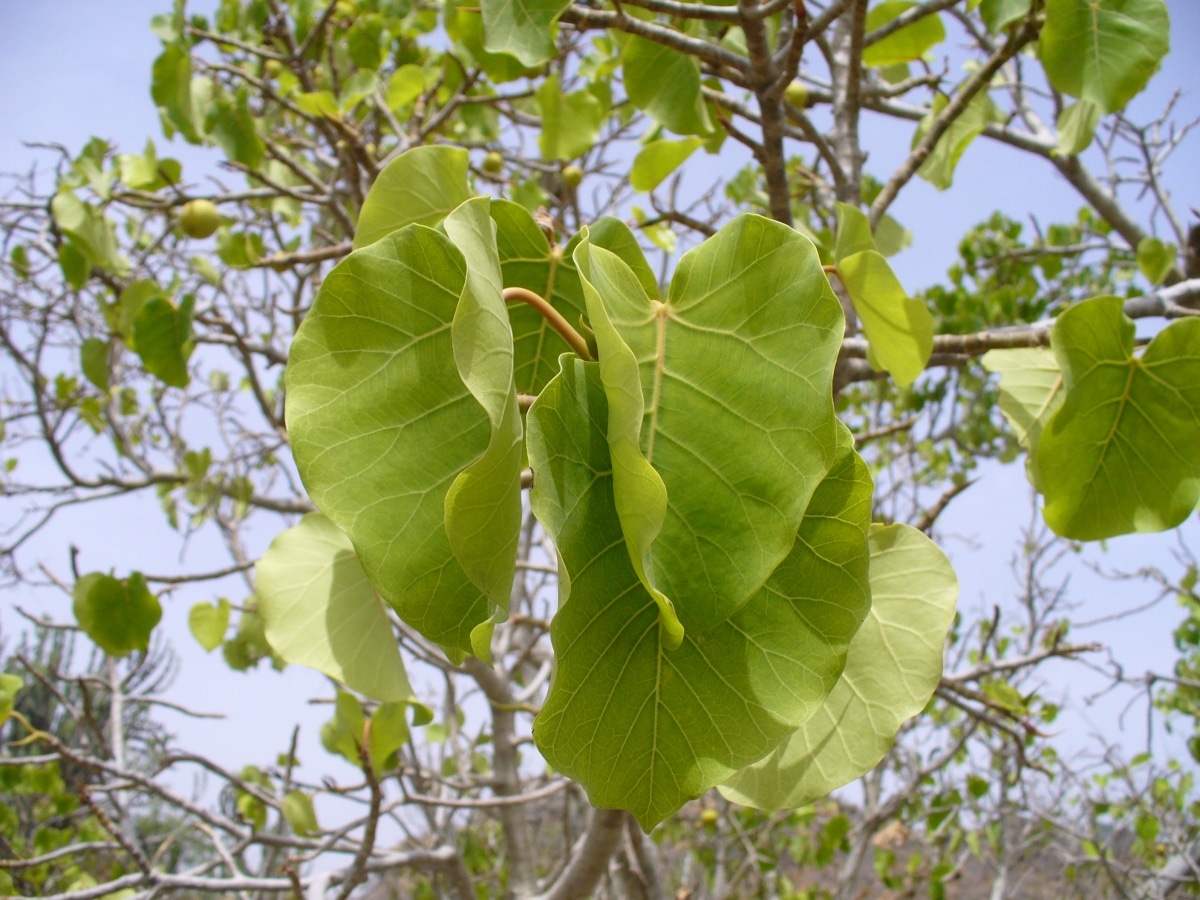
Image – figweb.org
El ficus umbellata It is a beautiful evergreen shrub native to Africa, which stands between 3 and 4 meters tall. Its leaves are heart-shaped, green, and measure about 30 centimeters long by 15 centimeters wide.
If you want to grow it, it is important that it be in a frost-free place. It is very sensitive to cold, so if winter temperatures drop below 18ºC, it must be kept inside the house.
How to take care of a Ficus?
Ficus need a lot of light, and better if it is direct, warm temperatures and high humidity. Nor can they lack water, of course, but watering has to be moderate. Next I will tell you what are the general care that must be provided:
- Location: Ideally, they should be outdoors, but if a cold-sensitive species is grown and frosts are recorded in our area, it must be protected indoors during the winter.
- Earth: the soil must be fertile, and have good drainage. If grown in a pot, it can be planted in one with a quality universal culture substrate, such as that of the Flower or Fertiberia brands.
- Irrigation: in general, it must be watered twice a week during the summer, and in winter once a week or every 2 days.
- Subscriber: it is advisable to pay it several times throughout the year, especially if it is in a pot. For this you can use organic fertilizers, such as compost or manure, or liquid fertilizers such as universal for plants. The latter are interesting for fertilizing potted plants, as they are effective quickly and do not hinder water drainage.
- Pruning: pruning, if necessary, will be done at the beginning of spring. You have to remove the branches that are dry and broken.
- Multiplication: Propagate by seeds in spring-summer and cuttings in spring.
- Transplant: if it is in a pot, remember to plant it in a larger one every 2 or 3 years, in spring.
That way it will grow well.